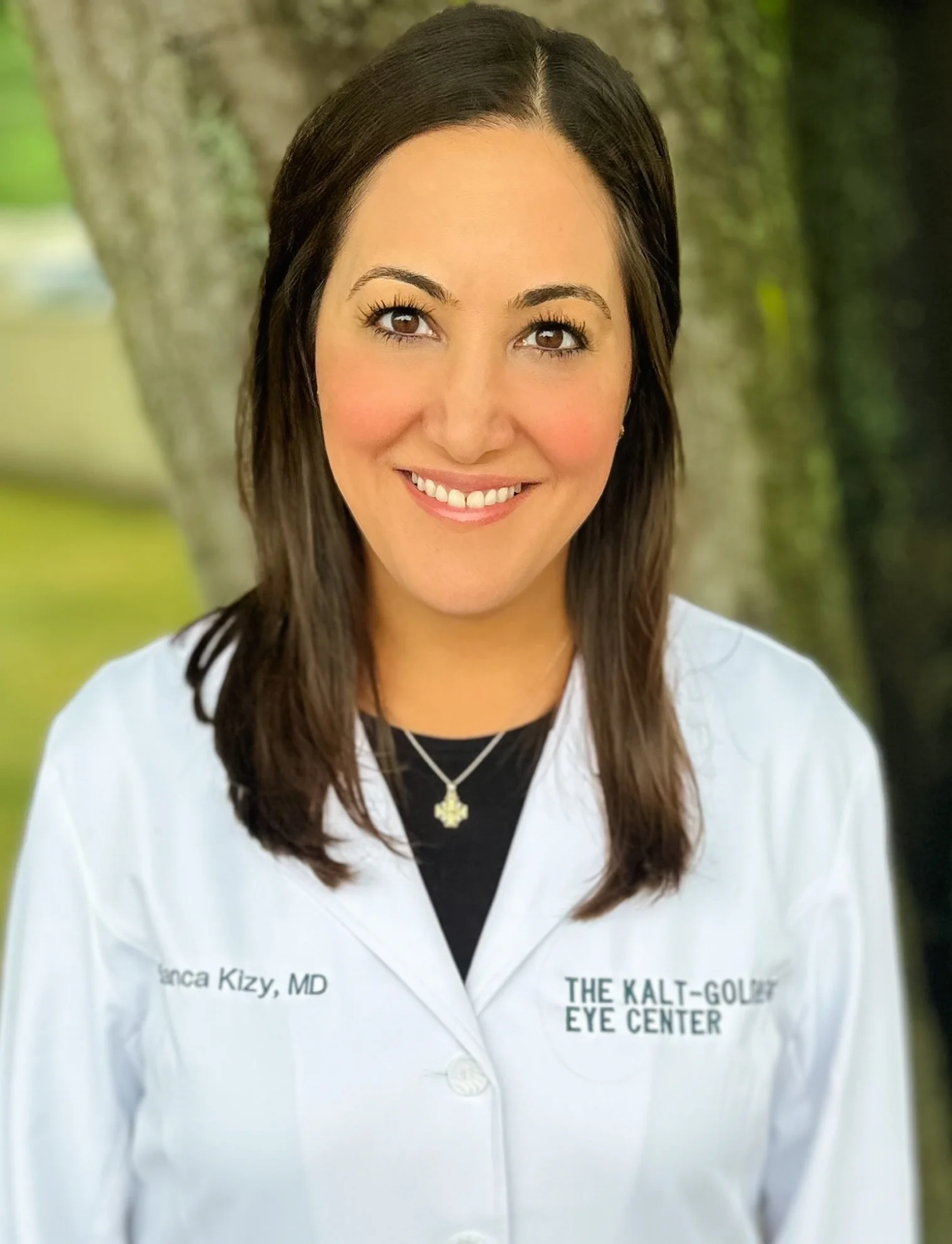Dry Eye & Blepharitis
Dry eye and blepharitis are two common yet often interconnected conditions that affect the surface of the eyes and the eyelids. While they may present differently, they frequently occur together and share overlapping symptoms and treatment approaches.
Dry Eye

Dry eye occurs when the eyes aren’t sufficiently moisturized, leading to itching, redness, burning, and pain from dry spots on the surface of the eye. This can happen either because the tear glands don’t produce enough tears, or because the tears themselves have a chemical imbalance that prevents them from functioning properly.
Drs. Kalt and Kizy can use tear osmolarity testing to determine if there are any chemical imbalances in your tears. This allows for a more accurate diagnosis and an effective treatment plan tailored to your condition.
Dry eye is more common with age, but it can also be triggered by certain medications, medical conditions, or injuries. If left untreated, dry eye can damage the eye’s surface tissues and impair vision.
Treatment Options
Non-surgical treatments for dry eye include:
- Blinking exercises
- Use of artificial tears or moisturizing ointments
- Increasing humidity at home or work
- Oral supplements to improve tear film quality
If these methods do not provide relief, more advanced options are available:
- Tear duct plugs to limit tear drainage
- A prescription medication proven to increase tear production
- Eyelid surgery, if an eyelid condition is contributing to dry eye symptoms
Blepharitis
Blepharitis is a chronic inflammation of the eyelids and eyelash follicles. It can result from a variety of causes, including:
- Seborrheic dermatitis
- Bacterial infections
- Dry eyes
- Poor eyelid hygiene
- Rosacea
- Allergies
These factors can lead to increased oil production near the eyelid, trapping bacteria and debris. This results in symptoms like crusting, swelling, itching, redness, excessive tearing, and in more severe cases, eyelash loss and sores on the eyelid. Complications such as corneal infections or the development of styes and chalazia can also occur.
Treatment Options
Initial treatment focuses on improved eyelid hygiene:
- Gentle cleansing of the eyelids and lashes
- Use of warm compresses to soothe discomfort and reduce inflammation
- Temporary cessation of eye makeup
- Topical antibiotics, if necessary
For persistent or severe cases, The Kalt-Goldberg Eye Center offers premium oil gland treatments and intense pulsed light therapy (IPL)—advanced in-office procedures designed to clean the eyelid margins, unblock oil glands, and reduce redness, irritation, and tearing associated with chronic blepharitis.




